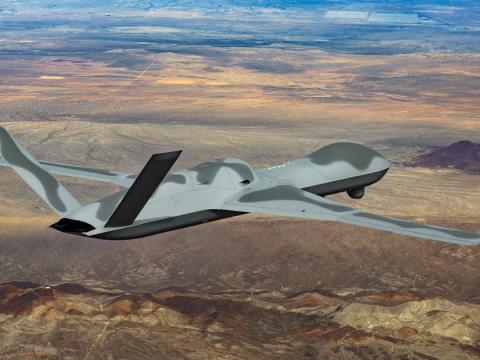DISA Determined to Tame the Acquisition Beast
The Defense Information Systems Agency is working to streamline its acquisition processes by using a mixture of efficiency and expertise. In some cases, the agency is adopting methods to free it from onerous Federal Acquisition Regulations. But mostly, its approaches leverage existing skills to condense traditionally drawn-out procedures.
Overall, the agency, better known as DISA, is striving for more agile internal processes—fewer forms and less administration. Acquisition plan templates will be simplified, consolidating procurements where applicable and improving category management. Achieving these gains will be more of a marathon than a sprint, with changes coming over time, states Douglas W. Packard, procurement services executive at DISA.
“My FY17 strategy is one word: Simplify,” Packard declares. DISA will reuse acquisition plans or performance work statements (PWSs) when it makes sense rather than re-create every document from scratch. The agency has a repository of lessons learned and effective PWS language that can be used more than once, he allows. This reuse will reduce the time allocated for planning.
In contract administration, Packard continues, if few issues arise and the language works, “you kind of know you have hit a sweet spot that industry understands.” The agency tracks the number of contract modifications it makes and how well a contract was understood, including how many questions were asked before an award. Those indicators, along with lessons learned, help DISA cultivate best practices.
That is also the idea behind examining acquisition strategies and plans. “Do we need a 14-page test plan, or do we need two pages to get the work done?” he asks theoretically. The goal is to tailor plans to exactly what DISA needs to do its work.
The agency also is targeting the number of lead times for procurement. Packard relates that several years ago, DISA had seven lead times, but that number has risen to more than 20. Now the agency is looking at how long it should take to carry out a single procurement process compared with how long it really takes.
Overall, Packard’s goals are built around DISA’s priorities as outlined by its director, Lt. Gen. Alan R. Lynn, USA: people, build, operate and defend. To develop DISA’s people, Packard’s focus is on building their soft skills, including verbal and written communications, as well as teaming up general schedule (GS) and senior executive service (SES) officials to learn the dynamics of decision making and trade-offs.
The build focus emphasizes collaboration within the procurement office. Integrated process teams hash out issues in conference instead of through extensive and time-consuming paperwork, Packard reports.
His office concentrates on category management for the operate focus. It examines categories with an eye toward consolidation and keeps small business concerns at the forefront of this effort. Another part of this thrust is what DISA calls the mesh network. How it works: If the agency buys five circuits that go into a single facility, it saves time, effort and resources by awarding a single contract for all five circuits to one firm that is responsible for ensuring they work together.
For the defend focus, Packard's office stresses DISA's cyber certification and accreditation functions. The agency certifies DISA 1102—contracting—employees, based on a Procurement Services Directorate (PSD)-developed cyber procurement certification program. The Defense Acquisition University and the Office of Management and Budget’s (OMB’s) Office of Federal Procurement Policy (OFPP) have both requested and been briefed on the program and expressed interest in expansion of the certification program to the Defense Department and the federal contracting workforce, respectively. DISA/PSD does not certify Defense Department or OMB personnel; rather, after setting a Defense Department policy, department components and each civilian agency—following OMB/OFPP policy—would certify their workforce.
Among the many challenges Packard’s office faces, setting priorities for the various programs is the biggest. “Every program has a No. 1 priority,” he explains. “Every program executive officer [PEO] has several No. 1 priorities in their portfolio. The challenge for a PEO is, what becomes your [top] No. 1, and when it comes to the DISA procurement work force, how do I lead the No. 1 of 20 No. 1 programs?”
Each PEO thinks his or her top program is No. 1, and managing those expectations is difficult in an overarching approach. “Is the No. 1 mobility? Is the No. 1 computing strategy? Is it cyber cloud terms and conditions to move along our ability to contract for cloud commercially?” Packard asks. He offers these issues as examples of the factors that complicate efforts to manage procurement time. Weighing these priorities affects how procurement office workload is distributed.
“It’s a balancing act, human nature-wise, of giving them all the right amount of attention, given there is but a limited amount of time to procure within our offices,” he declares. Packard does seek help from PEOs on establishing priorities within the agency. He adds that competing priorities have been and probably always will be encompassing procurement.
The issue differs from weapon system procurement, for example. As DISA buys information technology, it can focus resources on delivery instead of hardware development and testing. If the agency suffers a budget cut, it can turn to innovation to conserve dollars but still provide vital services to the warfighter. Any tradeoffs can be made at the director level, Packard points out.
Generally, the acquisition improvements DISA is working on are internal, with one exception: a possible pre-proposal approach for external acquisitions. Packard relates that the agency recently held a pre-proposal conference for a large acquisition followed by one-on-one meetings. The conference centered on DISA’s Systems Engineering, Technology and Innovation (SETI) contract vehicle worth $7 billion. The results of the pre-proposal approach—designed to change the way DISA incorporates innovation into services—were extremely positive, he says, and could herald a new method of external acquisition.
Within the procurement process, DISA is working on being able to use other transaction authority (OTA), in which the Federal Acquisition Regulations (FARs) do not apply. The Defense Innovation Unit Experimental (DIUx) has been using OTA to explore innovations and bring them to market quicker. DISA is looking at employing operational test agencies to bring leading-edge technologies into the organization. Packard views this as a method to harness innovation for emerging needs, noting that it has worked well for the National Security Agency’s mobility work. “Regardless of who does the work, we definitely need to tap into that innovation based in industry,” he declares.
When it comes to improving DISA’s acquisition processes, industry already is doing its part, Packard adds. “Industry responds to sources sought, responds to requests for information and participates in industry days and pre-proposal conferences,” he relates. “They are actively engaged in better ways of procurement.” He notes that industry has given DISA direction to take advantage of its products and services in the most efficient and cost-effective ways possible. “They know emerging technology better than we do. They are doing a phenomenal job. I’m very pleased with our interaction with industry.”
Packard also describes small business participation in acquisition as “phenomenal,” as he works closely with DISA’s director of its Office of Small Business Programs, Sharon Jones. DISA has a special focus on Historically Underutilized Business Zones (HUBZones) through a separate sources sought approach (see page 23).
Packard does offer a caveat to industry. He cautions against leading a program manager toward buying a specific product if many other products serve its purpose. “I’m very much a proponent of competition. I do not want the one-all product sole-sourced to company X. I want a product we can buy on the marketplace that ultimately drives prices down, and that competition is healthy for pricing, terms and conditions and for delivery of the product or services by industry,” he says.
Industry also must not take advantage of open dialogue or being involved in the evaluation process that is part of procurement in a way that creates an unfair competitive advantage, Packard warns. If either occurs, then the offending firm will be ineligible to compete, he declares.
DISA recognizes that it has administrative processes in its bureaucracy—as do all large organizations, public and private—and officials work hard to remove them. They always are open to constructive criticism. “If [some process] is not right, then give us the solution of what would work. It is much better to know what the art of the possible is,” Packard attests.
More on DISA’s new approaches to procurement will be available at DCOS 2017, being held at the Baltimore Convention Center June 13-15.




Comments